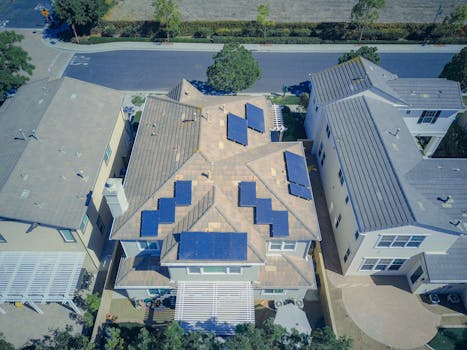“Solar Batteries: Powering Your Future for 5 to 15 Years!”
Solar batteries are essential components of solar energy systems, providing a means to store excess energy generated during the day for use during the night or during periods of low sunlight. The lifespan of solar batteries can vary significantly based on several factors, including the type of battery, usage patterns, and environmental conditions. Generally, lithium-ion batteries, which are commonly used in solar applications, can last between 10 to 15 years, while lead-acid batteries may have a shorter lifespan of 3 to 7 years. Understanding the lifespan of solar batteries is crucial for homeowners and businesses looking to optimize their energy storage solutions and ensure long-term efficiency and reliability in their solar energy systems.
Factors Affecting Solar Battery Lifespan
The lifespan of solar batteries is a critical consideration for anyone investing in solar energy systems. Understanding the factors that influence how long these batteries last can help users make informed decisions and optimize their energy storage solutions. One of the primary factors affecting solar battery lifespan is the type of battery technology employed. Lithium-ion batteries, for instance, are known for their longevity, often lasting between 10 to 15 years, while lead-acid batteries typically have a shorter lifespan, ranging from 3 to 7 years. This difference is largely due to the chemical composition and construction of the batteries, which affects their ability to withstand charge and discharge cycles.
In addition to battery type, the depth of discharge (DoD) plays a significant role in determining lifespan. The DoD refers to the percentage of the battery’s capacity that has been used. For example, if a battery has a capacity of 10 kWh and 4 kWh has been used, the DoD is 40%. Most batteries have a recommended DoD to maximize their lifespan. Exceeding this limit can lead to accelerated wear and tear, ultimately shortening the battery’s life. Therefore, it is essential for users to monitor their energy consumption and manage their battery usage accordingly.
Temperature is another critical factor that can significantly impact solar battery lifespan. Batteries operate best within a specific temperature range, typically between 20°C to 25°C (68°F to 77°F). Extreme temperatures, whether hot or cold, can lead to reduced efficiency and increased degradation. For instance, high temperatures can cause chemical reactions within the battery that lead to faster aging, while low temperatures can reduce the battery’s ability to hold a charge. Consequently, proper installation and location of solar batteries are vital to ensure they remain within the optimal temperature range.
Charging practices also influence the longevity of solar batteries. Overcharging or undercharging can lead to diminished capacity and reduced lifespan. Most modern solar battery systems come equipped with sophisticated charge controllers that help manage the charging process, but users should still be aware of their system’s performance. Regular maintenance and monitoring can help identify any issues early on, allowing for timely interventions that can extend battery life.
Furthermore, the frequency of charge and discharge cycles is a crucial aspect to consider. Each cycle contributes to the overall wear of the battery, and while batteries are designed to handle a certain number of cycles, excessive cycling can lead to premature failure. Users should aim to optimize their energy usage patterns to minimize unnecessary cycling, thereby prolonging the life of their batteries.
Lastly, the quality of the installation and the overall system design can also affect battery lifespan. A well-designed solar energy system that includes appropriate sizing, quality components, and professional installation can enhance the performance and longevity of solar batteries. Conversely, a poorly designed system may lead to inefficiencies and increased stress on the batteries, ultimately reducing their lifespan.
In conclusion, several interconnected factors influence the lifespan of solar batteries, including battery type, depth of discharge, temperature, charging practices, cycling frequency, and system design. By understanding and managing these factors, users can significantly enhance the longevity of their solar battery systems, ensuring a more reliable and efficient energy storage solution for years to come.
Comparing Lifespan of Different Solar Battery Types
When considering the lifespan of solar batteries, it is essential to understand that various types of batteries exhibit different longevity characteristics, influenced by their chemistry, usage, and maintenance. The most common types of solar batteries include lead-acid, lithium-ion, and flow batteries, each with unique attributes that affect their operational lifespan.
Lead-acid batteries, particularly the flooded variety, have been a staple in solar energy systems for many years. Typically, these batteries can last anywhere from 3 to 5 years, depending on factors such as depth of discharge and maintenance practices. While they are often more affordable upfront, their shorter lifespan and the need for regular maintenance, such as checking water levels and equalizing charges, can lead to higher long-term costs. Additionally, the performance of lead-acid batteries tends to degrade more rapidly if they are frequently discharged deeply, which is a common scenario in off-grid solar applications.
In contrast, sealed lead-acid batteries, including absorbed glass mat (AGM) and gel types, offer a slightly longer lifespan, generally ranging from 4 to 7 years. These batteries are designed to be maintenance-free and can handle deeper discharges better than their flooded counterparts. However, they still fall short when compared to newer technologies. As the solar industry evolves, lithium-ion batteries have emerged as a popular choice due to their superior performance and longevity.
Lithium-ion batteries can last between 10 to 15 years, making them a more attractive option for many solar energy users. Their ability to withstand deeper discharges without significant degradation is a key advantage, allowing for more efficient energy use. Furthermore, lithium-ion batteries have a higher energy density, meaning they can store more energy in a smaller footprint. This characteristic is particularly beneficial for residential applications where space may be limited. Additionally, advancements in battery management systems have enhanced the safety and efficiency of lithium-ion technology, further solidifying its position in the market.
Flow batteries, while less common, present another alternative with a unique lifespan profile. These batteries can last upwards of 10 to 20 years, depending on the specific technology and application. Flow batteries operate by storing energy in liquid electrolytes, which can be replenished and replaced without significant loss of capacity. This feature not only extends their lifespan but also allows for scalability, making them suitable for larger energy storage applications. However, the complexity and cost of flow battery systems can be a barrier for some users, limiting their widespread adoption.
As we compare these different types of solar batteries, it becomes clear that the choice of battery significantly impacts the overall efficiency and longevity of a solar energy system. While lead-acid batteries may be suitable for those with limited budgets or specific applications, lithium-ion and flow batteries offer longer lifespans and better performance, justifying their higher initial investment. Ultimately, the decision should be guided by individual energy needs, budget considerations, and the specific requirements of the solar installation. By understanding the lifespan and characteristics of each battery type, users can make informed choices that align with their energy goals and ensure a reliable and sustainable energy future.
Maintenance Tips to Extend Solar Battery Life
To maximize the lifespan of solar batteries, proper maintenance is essential. Understanding the factors that influence battery longevity can help users implement effective strategies to extend their operational life. One of the most critical aspects of maintaining solar batteries is ensuring they are kept at the right temperature. Extreme heat or cold can significantly impact battery performance and longevity. Ideally, solar batteries should be stored in a climate-controlled environment where temperatures remain stable. If the batteries are exposed to excessive heat, it can lead to accelerated degradation of the internal components, while cold temperatures can reduce their efficiency and capacity.
In addition to temperature control, regular monitoring of battery charge levels is crucial. Overcharging or deep discharging can both shorten the lifespan of solar batteries. To prevent these issues, users should invest in a quality charge controller that can regulate the charging process effectively. This device helps maintain optimal charge levels, ensuring that the batteries are neither overcharged nor excessively drained. Furthermore, it is advisable to follow the manufacturer’s guidelines regarding the recommended depth of discharge (DoD). By adhering to these specifications, users can significantly enhance the longevity of their solar batteries.
Another important maintenance tip involves periodic cleaning of the battery terminals and connections. Dust, dirt, and corrosion can accumulate over time, leading to poor electrical connections and reduced efficiency. Regularly inspecting and cleaning these components can help maintain optimal performance. When cleaning, it is essential to use appropriate materials and methods to avoid damaging the battery. A mixture of baking soda and water can effectively neutralize any corrosion, while a soft brush can help remove debris without scratching the terminals.
Moreover, keeping an eye on the battery’s electrolyte levels is particularly important for lead-acid batteries. These batteries require regular checks to ensure that the electrolyte solution is at the appropriate level. If the levels are low, distilled water should be added to maintain the necessary balance. However, it is crucial to avoid overfilling, as this can lead to spillage and potential damage. For lithium-ion batteries, while they do not require electrolyte maintenance, it is still important to monitor their overall health through regular performance checks.
In addition to these maintenance practices, users should also consider the age of their solar batteries. As batteries age, their capacity and efficiency naturally decline. Therefore, it is wise to keep track of the battery’s age and performance metrics. If a battery shows signs of significant degradation, such as reduced capacity or frequent failures, it may be time to consider replacement. Proactive replacement can prevent unexpected failures and ensure that the solar energy system continues to operate efficiently.
Lastly, investing in a quality solar battery management system can provide additional support in maintaining battery health. These systems offer real-time monitoring and diagnostics, allowing users to track performance and identify potential issues before they escalate. By implementing these maintenance tips, users can significantly extend the lifespan of their solar batteries, ensuring that they continue to provide reliable energy storage for years to come. Ultimately, a combination of proper care, regular monitoring, and timely interventions will lead to enhanced performance and longevity, making solar energy systems more efficient and cost-effective in the long run.
Signs Your Solar Battery Needs Replacement
Understanding the signs that indicate your solar battery needs replacement is crucial for maintaining an efficient solar energy system. As solar batteries play a vital role in storing energy generated from solar panels, their performance directly impacts the overall effectiveness of your renewable energy setup. Over time, like any other component, solar batteries can degrade, and recognizing the early warning signs can save you from unexpected energy shortages and costly replacements.
One of the most noticeable signs that your solar battery may need replacement is a significant drop in its capacity. If you find that your battery is no longer holding a charge as it once did, this could indicate that it is nearing the end of its lifespan. For instance, if your battery used to provide sufficient power for your household needs but now struggles to keep up, it may be time to consider a replacement. Monitoring the battery’s performance over time can help you identify this decline. Many modern solar battery systems come equipped with monitoring tools that allow you to track performance metrics, making it easier to spot any concerning trends.
Another critical sign to watch for is a decrease in the battery’s efficiency. If you notice that your solar battery is taking longer to charge or is unable to reach its full charge, this could be a clear indication of wear and tear. Efficiency issues can stem from various factors, including age, temperature fluctuations, or even improper maintenance. Regularly checking the battery’s charging cycles and comparing them to its expected performance can help you determine if it is functioning optimally or if it is time for a replacement.
Additionally, physical signs of damage or wear can also indicate that your solar battery needs attention. Inspecting the battery for any visible signs of corrosion, leaks, or swelling is essential. Corrosion can occur due to exposure to moisture or chemicals, while swelling may indicate internal damage. If you observe any of these physical issues, it is advisable to consult a professional to assess the situation. Ignoring these signs can lead to further damage and potentially compromise the safety of your solar energy system.
Moreover, unusual noises coming from the battery can also be a red flag. While solar batteries are generally quiet, any hissing, popping, or buzzing sounds may indicate internal problems. These noises can be a sign of overheating or other malfunctions that could lead to a complete failure of the battery. If you hear any unusual sounds, it is crucial to investigate further and seek professional advice.
Lastly, if your solar battery is approaching the end of its warranty period, it may be wise to consider a replacement, even if you have not yet noticed significant performance issues. Most solar batteries have a lifespan of 5 to 15 years, depending on the type and usage. As the warranty period nears its conclusion, the risk of failure increases, and replacing the battery proactively can help ensure uninterrupted energy supply.
In conclusion, being vigilant about the signs that your solar battery may need replacement is essential for maintaining an efficient solar energy system. By monitoring capacity, efficiency, physical condition, unusual noises, and warranty status, you can make informed decisions about when to replace your battery. This proactive approach not only enhances the performance of your solar energy system but also ensures that you continue to benefit from renewable energy without interruption.
Q&A
1. **How long do solar batteries typically last?**
Solar batteries generally last between 5 to 15 years, depending on the type and usage.
2. **What factors affect the lifespan of solar batteries?**
Factors include battery type, depth of discharge, temperature, and charging cycles.
3. **How can I extend the lifespan of my solar battery?**
To extend lifespan, avoid deep discharges, maintain optimal temperature, and perform regular maintenance.
4. **What happens when a solar battery reaches the end of its lifespan?**
When a solar battery reaches the end of its lifespan, it will lose capacity and efficiency, requiring replacement.
Conclusion
Solar batteries typically last between 5 to 15 years, depending on the type of battery, usage, and maintenance. Lithium-ion batteries generally have a longer lifespan compared to lead-acid batteries. Proper care and optimal charging practices can extend their longevity, while extreme temperatures and deep discharges can shorten it. Regular monitoring and maintenance are essential for maximizing the lifespan of solar batteries.




